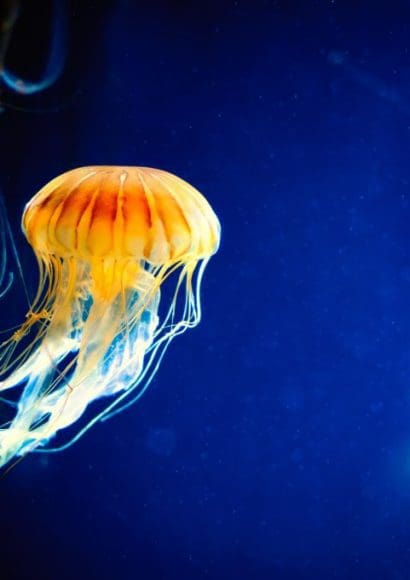
Jellyfish, with their ethereal and mesmerizing presence, have captivated the curiosity of scientists and enthusiasts alike. One of their most distinctive features is their venomous tentacles, which hang delicately beneath their gelatinous bodies. These tentacles, adorned with stinging cells capable of delivering potent venom, serve a crucial purpose in the life of a jellyfish. But why do these fascinating creatures possess such an enigmatic and potentially dangerous adaptation? In this article, we will delve into the intriguing world of jellyfish and explore the reasons behind the evolution of their venomous tentacles.
By understanding the functions and significance of these tentacles, we can gain a deeper appreciation for these ancient oceanic beings and their remarkable survival strategies. So, let us embark on a journey to unravel the secrets behind the question: Why do jellyfish have venomous tentacles?
Contents
Anatomy of jellyfish..
The anatomy of jellyfish is a fascinating subject that sheds light on their unique structure and remarkable adaptations. These ethereal creatures, known for their gelatinous bodies and graceful movements, possess an anatomy specifically designed for survival in their marine environments.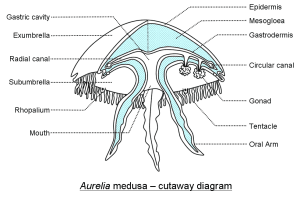
At the core of a jellyfish’s anatomy is the bell-shaped body, also known as the medusa. The medusa is comprised of a soft, transparent, and often bioluminescent gelatinous substance. It typically has a dome-shaped top and a tapered bottom, resembling an inverted umbrella.
Radiating from the edges of the bell are the tentacles, which are an iconic feature of jellyfish. These tentacles can vary in length, number, and appearance depending on the species. They hang down beneath the bell and are equipped with specialized structures called nematocysts, which are stinging cells responsible for delivering venomous stings.
Functions of jellyfish tentacles.
Jellyfish tentacles serve a variety of essential functions in the lives of these mesmerizing creatures. These long, slender appendages, often adorned with stinging cells, play a crucial role in their survival and interactions with the environment.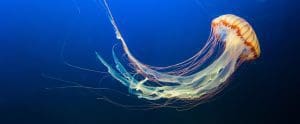
One of the primary functions of jellyfish tentacles is capturing prey. Jellyfish are carnivorous organisms that feed on a wide range of small organisms such as plankton, fish larvae, and even other jellyfish. The tentacles are equipped with specialized structures called cnidocytes, which contain nematocysts – small capsules filled with venomous toxins. When a jellyfish comes into contact with potential prey, these cnidocytes discharge the nematocysts, injecting venom into the prey and immobilizing it. The tentacles then coil around the captured prey, bringing it towards the jellyfish’s mouth for consumption.
How do the tentacles function in prey capture?.
The tentacles of jellyfish play a crucial role in capturing prey and securing a source of sustenance. These remarkable appendages are well-equipped with specialized structures and mechanisms that aid in the capture and immobilization of their prey.
When a jellyfish detects potential prey in its vicinity, it deploys its tentacles to initiate the capture process. The tentacles of jellyfish are lined with thousands of tiny, harpoon-like structures called cnidocytes. Each cnidocyte contains a coiled, filamentous thread that is stored under high pressure and contains venomous toxins.
Upon contact with a suitable prey item, the trigger mechanism of the cnidocyte is activated, causing it to discharge rapidly. This rapid discharge releases the coiled thread, which is propelled outward like a miniature harpoon. The venomous toxins contained within the thread are injected into the prey, immobilizing or stunning it.
Important fact.
It is important to note that jellyfish tentacles are not selective in their capturing process. They are indiscriminate feeders, capturing any small organism that comes into contact with their tentacles. This feeding strategy allows jellyfish to exploit a wide range of prey sources, making them highly adaptable in various marine ecosystems.
Defense against predators.
Jellyfish have developed various defense mechanisms to protect themselves against predators in their aquatic habitats. These defense strategies are crucial for their survival and help them avoid being consumed or injured by other organisms.
One of the primary defense mechanisms of jellyfish is their venomous tentacles. When threatened or approached by a potential predator, jellyfish can deploy their tentacles to deliver a painful sting. The nematocysts present on the tentacles contain venomous toxins that are injected into the predator upon contact.
The venom can cause irritation, paralysis, or even be lethal to smaller organisms, acting as a powerful deterrent to predators. This defensive mechanism warns predators to keep their distance, reducing the likelihood of an attack and increasing the jellyfish’s chances of survival.
Sense and detection of prey.
Jellyfish possess remarkable abilities when it comes to sensing and detecting prey in their aquatic environment. While they may lack sophisticated sensory organs like eyes or ears, they have evolved specialized adaptations that allow them to perceive and locate potential food sources.
One of the key mechanisms jellyfish employ for prey detection is chemoreception. Their tentacles are equipped with specialized cells that can detect chemical cues in the water. These chemosensory cells help jellyfish identify the presence of nearby prey, such as the scent of plankton or other small organisms. When these chemical signals are detected, jellyfish can orient themselves towards the source of the scent and direct their movements accordingly.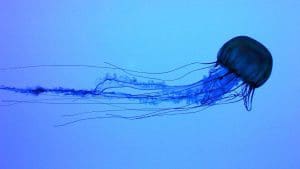
It is worth noting that jellyfish tentacles are also sensitive to touch. This tactile sensitivity allows jellyfish to quickly detect physical contact with their tentacles, which can help in capturing prey or defending against potential threats.
Importance of venomous tentacles for the survival of jellyfish.
In conclusion, the venomous tentacles of jellyfish play a vital role in their survival and success as marine organisms. These specialized appendages serve multiple functions that contribute to their ability to capture prey, defend against predators, and navigate their environment.
The primary function of venomous tentacles is prey capture. Equipped with stinging cells called nematocysts, the tentacles allow jellyfish to immobilize and secure their food sources. The venom injected into prey helps subdue and incapacitate them, ensuring a successful capture and a reliable source of nutrition for the jellyfish.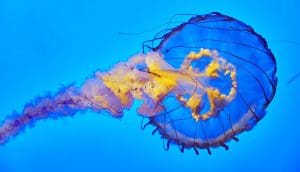
Additionally, the venomous tentacles act as a powerful defense mechanism against predators. The toxic substances contained within the nematocysts deter potential threats by causing pain, paralysis, or even death. This defense mechanism serves as a crucial deterrent, reducing the likelihood of predation and increasing the chances of survival for jellyfish.


